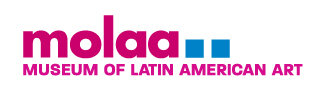Alberto Díaz Gutiérrez (Korda) (Cuba, b. 1928) Guerrillero Heroico / Heroic Guerrila Fighter, 1960, Gelatin silver print, 26 x 22 in. Courtesy of the Pieczenik collection
JUN. 6 – AUG. 2, 2015
Korda: revolutionary Photographer
Cuban photographer Alberto Díaz Gutiérrez, better known as Korda (1928–2001), is remembered for his iconic photograph Guerrillero Heroico / Heroic Guerrilla Fighter. The 1960 portrait of Marxist Argentine revolutionary Che Guevara is now one of the most widely reproduced images in the world.
Korda: Revolutionary Photographer presents this iconic image of protest and revolution in the context of Korda’s other Cuban Revolution-era photographs from the late 1950s and early 1960s. The exhibition is comprised of nineteen vintage photographs from the collection of Dr. Steve Pieczenik and Dr. Roberta Rovner Pieczenik.
Korda: Revolutionary Photographer is comprised of twenty vintage photographs from the collection of Dr. Steve Pieczenik and Dr. Roberta Rovner Pieczenik.
About the Photographer
Alberto Díaz Gutiérrez (KORDA)
Cuban photographer Alberto Díaz Gutiérrez, better known as Korda (September 14, 1928, Havana, Cuba – May 25, 2001, Paris, France) is best remembered for his iconic photograph Guerrillero Heroico / Heroic Guerrilla Fighter. The 1960 portrait of Marxist Argentine revolutionary Che Guevara, taken in Cuba, was reproduced across Europe later in the decade and is now one of the most widely reproduced images in the world. Korda: Revolutionary Photographerpresents this iconic image of protest and revolution in the context of Korda’s other Cuban Revolution-era photographs from the late 1950s and early 1960s.
Korda studied at the Havana Business Academy in El Vedado as well as the Candler College in Havana. He began working as an amateur wedding photographer at the end of the 1940s to support his family. After taking an interest in fashion photography, Korda earned professional advertising assignments, later establishing Studio Apartment No. 2. As Cuba’s first fashion photographer, he regularly published his work in Havana Weeklyand in 1959 he was awarded the Palma de Plata prize for his photography.
That year, Korda began documenting the Cuban Revolution. In his studio, four drawers would be devoted to photographs of the Cuban Revolution. Through Korda’s intimate access to revolutionary Cuban leaders, as an unofficial state photographer, he was able to capture Che Guevara and Fidel Castro in more leisurely moments. The exhibition offers glimpses of Cuban revolutionaries playing golf, fishing, skiing, and traveling the world with Korda. Other photographs show Che and Fidel mingling with farmers and fixing tractors.
Remarking on his fascination with such disparate subjects, Korda stated, “I have loved the beauty of women as much as the beauty of those men who led the Revolution. The beauty of those men is not only aesthetic but also moral."


